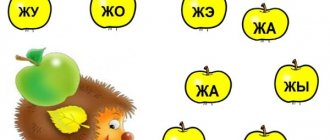Verbal and nonverbal communication are like two sides of the same process. You can say a lot with language and speech, but there are some moments that are best conveyed through body language. Knowing the possibilities of different forms of communication allows a lot. For example, to gain the favor of other people, to predict the consequences of one’s actions and their impact on others.
What is verbal communication
Under Verbal Communication
the sound language familiar to us is understood.
Human articulate speech is a special information system that is inaccessible to most animals, but has become the main means of communication for people. The concepts of “language” and “speech” seem to be synonymous, although science still distinguishes them. Language is a specific set of signs and rules for their coordination and combination. And speech is the very ability to convey information in a sound (and written) way, as well as a specific sounding “work” (conversation, speech, etc.).
Verbal communication can be carried out through the mutual exchange of information, and then it is a dialogue. It can also be carried out in the form of a monologue - a speech by one person. At the same time, the fact of communication is always realized by all its parties. That is, in order to say something in words, you need to really want it. This constitutes one of the main differences between verbal and nonverbal communication.
Means of this type of communication
Verbal means of communication include speech, language, and words. Language, as a way for people to communicate and transmit information, appeared a very long time ago. It is a communication tool. A word in a language is a symbolic symbol that can have several meanings at the same time. Verbal communication cannot do without speech, which can be oral and written, internal and external, and so on. It should be noted that inner speech is not a means of transmitting information. She is not accessible to the people around her. Therefore, verbal speech communication does not include it in its system of means.
Speech helps a person encode certain information and transmit it to the interlocutor. It is through it that the informant influences his interlocutor, instilling in him his point of view. While the interlocutor can perceive it in his own way. This is where the basic functions and verbal means of communication begin to work.
What is nonverbal communication
Under non-verbal communication
means such means of communication as facial expressions, gestures, postures, touches, intonations, changes in the circumstances of communication - that is, those that are carried out without the use of words. The human body, which has a huge number of expressive capabilities, becomes the instrument of such communication.
At the same time, “non-verbal communication” often occurs unconsciously for one or all participants in communication. “Body language” is capable of revealing even what we would not like to discover in ourselves. And the reaction to a nonverbal message also often occurs unconsciously. Meanwhile, it makes sense to learn to recognize non-speech signals in order to make the communication process more effective.
Most often, both means of communication are used simultaneously. Many people tend to gesticulate when speaking, reinforcing their words with their hands and grimaces and clarifying their meaning. In some cultures, gesturing is considered bad manners, but even there it is not possible to completely get rid of this “bad habit”.
Features of communications in men and women
As a result, nonverbal cues may be less clear and accurate, and may be misinterpreted.
According to Western scientists, the reliability of a message received through nonverbal communication does not exceed sixty percent. At the same time, it is believed that women tend to focus their attention more strongly on non-verbal signals in communication situations, and this explains why they are rightfully considered better listeners than men. Men often focus their attention on words.
Conclusion
Based on this, we can conclude that the growth of interpersonal communications using e-mail and faxes is more beneficial for men, and the strengthening role of video conferencing can become an advantage for the female part of employees.
Methods of nonverbal communication
The most popular non-verbal communication tools are gestures and facial expressions. Hands and face are the most “emotional” parts of the body, and the most mobile, as a result of which they are more expressive when speaking. The expression of emotions is perhaps the main content of the “conversation” when gesturing. Verbal communication is not always capable of conveying the emotional component of information, and this ability varies in different “sound” languages. In this case, the hands and face are connected. Especially if the conversation is conducted by “hot” and sensual people.
Additional ways of nonverbal communication are postures and touch. Such body movements can also tell a lot about a person, his thoughts and attitude to what is happening.
Even the distance between interlocutors can say a lot about the participants in the conversation.
So, there are types of maximum permissible distance depending on the circumstances of the conversation
:
- Intimate distance – up to half a meter
. This is how interlocutors talk, who trust each other to the maximum extent and are ready to share their most intimate things. In particular, lovers stand very close to each other. Best friends also communicate at the closest possible distance. At such a distance, physical contacts and touches are possible, which also reflect the closest, most trusting and intimate relationships possible. - Interpersonal distance – from half a meter to 1.2 meters
. At such a distance, ordinary friends, acquaintances, and close acquaintances conduct a friendly conversation. Touching may also be allowed here, although such strong bodily contacts as in the first case are not possible. - Social distance – from 1.2 to 3.7 meters
. It is intended for informal interaction in society, during a business meeting. The greater the distance, the more formal the conversation. It goes without saying that touching at such a distance is no longer possible. - Public distance is more than 3.7 meters
. This is the most appropriate distance for a lecturer speaking to a large group of people.
The distance during a conversation also depends on the gender, age, and personality characteristics of a person. Thus, young children are most comfortable communicating at close range, while teenagers prefer to distance themselves. A woman prefers a closer distance, regardless of the gender of her interlocutor. Confident people do not pay much attention to distances, while anxious people tend to be away from their interlocutors. Powerful people tend to shorten the distance when talking, to push - this is where, apparently, the word “assault” comes from.
Visual contact is also an important source of information. Vision is the main sense organ for humans; with its help, we strive to obtain maximum information about the subject that interests us. Therefore, long eye contact means admiration for the interlocutor, if the gaze is calm. A gaze with raised eyebrows signifies anticipation. And an intrusive, gaze with a somewhat alarming expression means indignation. If a person “rolls” his eyes, looks away, and avoids eye contact in every possible way, this means that the interlocutor is unpleasant to him.
Gestures and postures tell about people's feelings and attitudes. Their manner of sitting, standing, and the placement of their hands are important. For example, a positive position is recognized when the interlocutor sits with the body slightly tilted forward, with the hand slightly touching the cheek. Criticism is expressed by a characteristic gesture: one hand is at the chin, the index finger is extended along the cheek, the second hand supports the elbow of the first. If there is distrust, the interlocutor covers his mouth with his palm. Superiority is expressed by a sitting position, one leg placed on the other, arms thrown behind the head, eyes slightly closed. When disapproving, a person “shakes off the lint,” straightens his clothes or shakes them off, his movements are convulsive and restless.
Rubbing the chin, forehead, and bridge of the nose are known indicators of concentration. The eyes may be closed. Outstretched arms, straight head, relaxed body indicate the openness of the interlocutor.
Facial expressions are also important. It can tell about both a person’s thoughts and his feelings, while different halves of the face carry different information. As you know, the left hemisphere of the brain is responsible for intelligence, which controls the right side of the face; The right hemisphere of the brain is responsible for emotions and controls the left side of the face.
Anger is expressed by wide open eyes, while the gaze is “squinted”, the teeth are clenched, and the corners of the lips are lowered. Raised eyebrows and a slightly open mouth mean that a person is surprised. Closed eyebrows, stretched lips with downturned corners indicate that the interlocutor is scared. A calm look with raised corners of the lips means the interlocutor is happy. Lowered lips and a “faded” gaze indicate sadness.
Even the intonation and timbre of the voice carry their own layer of information. Thus, drawn-out pronunciation of words and monotonous intonation are characteristic of an arrogant person. Clear, confident speech and a high tone of voice indicate enthusiasm and elation. A low tone of voice and a decrease in volume towards the end of a sentence indicate fatigue; Excitement is conveyed in the same way, but the speech is faster and the statements are abrupt. If there are many pauses in speech, the interlocutor coughs, or makes mistakes in words, it means that he is demonstrating uncertainty.
Verbally - this is our difference from the other living world
Words that are composed into speech are the unit of our communication with you. We use them both in oral pronunciation and in writing. Or typing (typing on the keyboard), if we talk about realities that are closer to us. Such communication is divided depending on who plays what role: speaking - listening, writing - reading.
In order to maintain verbal communication at a high level, you need to develop its components. This is, first of all, vocabulary (what is it?). Reading books, listening to vocabulary, talking with intellectually developed people - all this significantly helps to replenish and expand your vocabulary.
When communicating in writing, it is very important to know the rules of punctuation in order to present information correctly. Often, by placing periods and commas incorrectly, you can distort the meaning or emphasize something wrong. We all remember the cartoon where you had to put the punctuation mark in the right way and save your life: “Execution cannot be pardoned.”
Speech and written communication solves several problems at once:
- Communicative – ensures interaction between people in its large-scale manifestations.
- Cognitive – a person gains knowledge and new information.
- Cumulative – displaying accumulated knowledge (writing notes, books).
- Emotional - you can express your attitude to the world, feelings using words.
- Ethnic – unification of the populations of different countries (according to the language used).
The role and importance of communication means for humans
Communication itself is one of the main attributes of human life. And all means are important: both verbal and non-verbal communication. Each means expresses its “share” of information, and the ability to read different “codes” helps to assess the situation as a whole.
Non-verbal communication, in particular, becomes necessary when verbal mutual understanding is impossible. For example, if the interlocutors speak different languages or one of them is deaf and dumb. Various sign languages have been developed for such purposes. Interestingly, in New Zealand the local sign language has the status of an official language; In this language, the English-speaking white population communicates with the Maori, an indigenous people whose representatives do not always agree to learn English.
As for ordinary situations, the importance of the non-verbal “part” of a conversation was shown by the Austrian writer Alan Pease; he states that only seven percent of information we receive from the verbal component of communication, and the rest we perceive through non-verbal signals. Researchers have also noticed that in recent years the role of non-verbal communication has increased significantly. One of the reasons for this may be caution: the interlocutor may well lie, hide information, and his true intentions can only be established by “reading” gestures and facial expressions. Increased tolerance also prevents people from using emotionally charged expressions in speech, and then nonverbal signals come to the rescue.
Detecting lies is one of the most important skills. The effect is based on the fact that most people do not control their emotions, so they may not correspond to the words spoken. Words can deceive, but their gestural “accompaniment” is not capable of this. Unless, of course, the interlocutor has learned to control himself and use facial expressions and gestures to further confuse the one with whom he is talking.
Learning to recognize non-speech information can take quite a long time. After all, there are not only well-known and understandable signals that are reflected even in phraseology (“head drooping,” “standing with mouth open,” etc.), but also rather subtle and non-obvious signs.
American writer Julius Fast once described an interesting incident. At one school there was a girl from Puerto Rico, whom the principal once found among a group of her peers smoking. All of these girls were arrogant and undisciplined, except for this Puerto Rican girl. Nevertheless, the director decided to punish her because he caught her in what he considered “suspicious behavior”: when talking, she diligently averted her eyes. The girl was saved by a local Spanish teacher, who explained to the director that in Puerto Rico, well-mannered girls never look adults in the eyes, which is a sign of respect.
It is obvious that the language of gestures, facial expressions, and intonations has a more ancient origin than “ordinary human” language. Indeed, articulate speech is a rather complex phenomenon, requiring not only a developed speech apparatus, but also the necessary level of abstract thinking. But nonverbal communication is widely available to animals. From them, apparently, we got most of the extra-speech signals.
In animals, postures, intonations of vocal cries, facial expressions express relations of superiority and submission, the choice of a partner for mating, friendship or enmity, and other information. Often, exchanging threatening postures and shouting can help avoid a fight, which may be disadvantageous to both parties. Primates, of course, have the richest system of gestures, postures and facial expressions, but many other animals also have their own sets of signals.
Non-verbal communication even allows us to contact our smaller brothers. The position of a cat or dog's tail can tell a lot about the animal's mood at the moment. Staring is an ominous signal for dogs and cats, especially if you look directly into their eyes.
Types of Verbal Communication
Speech communication has its own types. We have already listed the main ones - speech in all its manifestations, dialogue, monologue. The peculiarities of verbal communication are that it also includes private types of communication.
- A conversation is a verbal exchange of opinions, thoughts, and knowledge. This process can involve two or more people who communicate in a relaxed atmosphere. Conversation is used when an issue is highlighted or an issue is clarified.
- An interview is a little different from a conversation in that it is formal. The topics of the interviews are narrow professional, scientific or social issues.
- Dispute is a dispute on scientific or any socially important topics. This type is also included in the concept of “verbal communication”. Communication within the framework of a dispute between people is limited.
- The discussion, in turn, is also public, but the result is important in it. Here different opinions on a specific issue are discussed, different points of view and positions are presented. As a result, everyone comes to the same opinion and solution to the controversial issue.
- A dispute is a confrontation of opinions, a kind of verbal struggle in order to defend one’s opinion.










